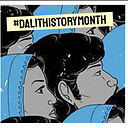Sathyavani Muthu — Immeasurable Contributions to the Dravidian and Ambedkarite Movements
This post was written for Dalit History Month by Bhavani Illavenil. Bhavani Ilavenil is the author of “Thaltapatta Makkulku Kalingnar M Karunanidhi Seydha Droham: Sathyavani Muthu Varalar” (How Kalaingnar M Karunanidhi Betrayed Oppressed People — Dr Sathyavani Muthu’s Struggles), a book which looks at the life and struggles of three-time MLA and MP Dr Sathyavani Muthu, one of the earliest Dalit leaders of DMK. Editing and translation from Tamil to English was contributed by Krishna Kala Baskaran.
Today in #DalitHistory we look at the life and achievements of a Dalit woman who was a major contributor to both the Dravidian and the Ambedkarite movements.
The Dravidian movement was a collective effort. For more than two decades, people from the Scheduled Caste community have contributed immensely to the progress of the movement. Of them, the one who stands the tallest is Sathyavani Muthu.
Born in Chennai in 1923, Sathyavani Muthu was exposed to the cruelties of Brahminism right from a young age. Her father, having been part of the Justice party, the South Indian Buddhist association and Periyar’s Self Respect Movement, was instrumental in inspiring young Sathyavani Muthu to social work. Growing up observing the atrocities that oppressed people faced from the larger public, she involved herself in Thanthai Periyar’s Self Respect movement and even began sharing the stage with Periyar in his conferences. Her cover story in the magazine Kudiarasu named Hindian Ragasiyam (Hindi’s Secret) was one of the very first written in opposition to Hindi in the subcontinent.
When Babasaheb Ambedkar instituted the Scheduled Caste Federation in 1943, at only 20 years old, she was found extremely capable and was appointed the head of its women’s wing in Chennai district. She was the one who introduced Dravidian leaders like C.N. Annadurai and Ka. Anbazhagan to the Federation.
Her contribution to organising Dravidian movement conferences and meetings were immense. Once in Pondicherry, a meeting was organised and Sathyavani Muthu and Ka. Anbazhagan were invited to unveil a portrait of Babasaheb and a map of Dravidanadu (the Dravidian country) respectively. Amidst strong opposition from the Congress, the meeting began under the presidency of veteran leader Azhagirisamy. Before they could speak, goons from the Congress attacked the gathering with sticks and Sathyavani and others reached safety with the help of friends like Ponramalingam.
She was later shocked to hear that the Congress workers were planning to disrobe her on the way to the railway station. As someone who has worked without fear, this episode made her realise how dangerous it was for women to be in political activism.
In 1943, she left the Scheduled Caste Federation to stand with Anna who started the Dravida Munnetra Kazhagam (DMK) and spearheaded the effort in taking the party to people. In 1957, She was one of the first 15 DMK members long with Anna to be elected to the state legislative. When the DMK formed the government in 1967, she served as the Minister for Adidravida (Dalit) Welfare. When the Kizhvenmani massacre took place in December of 1978, she rushed to the village to support the victims. She arranged for the village to be adopted by the government and built houses and a school.
When she was in the Kalaignar Karunanidhi’s cabinet in 1974, she pressed for the establishment of a law college named after Ambedkar, lending support to a long-standing demand of the Dalit community. Citing lack of funds, the government mockingly said that the demand would be met if Dalits could raise half the amount. When Sathyavani Muthu started raising funds, the government was left at an embarrassing spot. Her speech at the meeting organised by the SC/ST association of ICF (Railway Factory) Chennai led to her removal from the cabinet. At the meeting, she spoke about the government’s Family Planning Scheme, which she felt, was targeted at the gullible poor who were lured in by the small freebies that came with it. Sathyavani felt that these were measures to stifle the numerically large population of Dalits in the state. She was immediately dropped from the cabinet citing that she, being a Minister, spoke ill of the government she was part of. Her security, phone connection, water connection were all withdrawn even before she reached her home from where she gave the speech.
She started the Thazhthapattor Munnetra Kazhagam in 1975 and in 1977, and upon request from M.G.R, she merged with the ADMK and became the member of legislative council in the state. She was later elected to the Rajya Sabha and became the union minister for social welfare in 1978. In her official visits abroad, she met leaders like Pope Paul and Queen Elizabeth with whom she discussed caste and patriarchy.
Having spent almost 6 decades in politics, Sathyavani Muthu stayed true to her Self-Respect principles despite the movement taking several forms and was called the Determined Self Respect Warrior by Periyar. For her scathing critiques on religion, God and caste, she has been jailed several times.
Towards the end of her life, she rejoined the DMK which she was part of, with Anna, her leader. She breathed her last on the 11th of November 1999.
